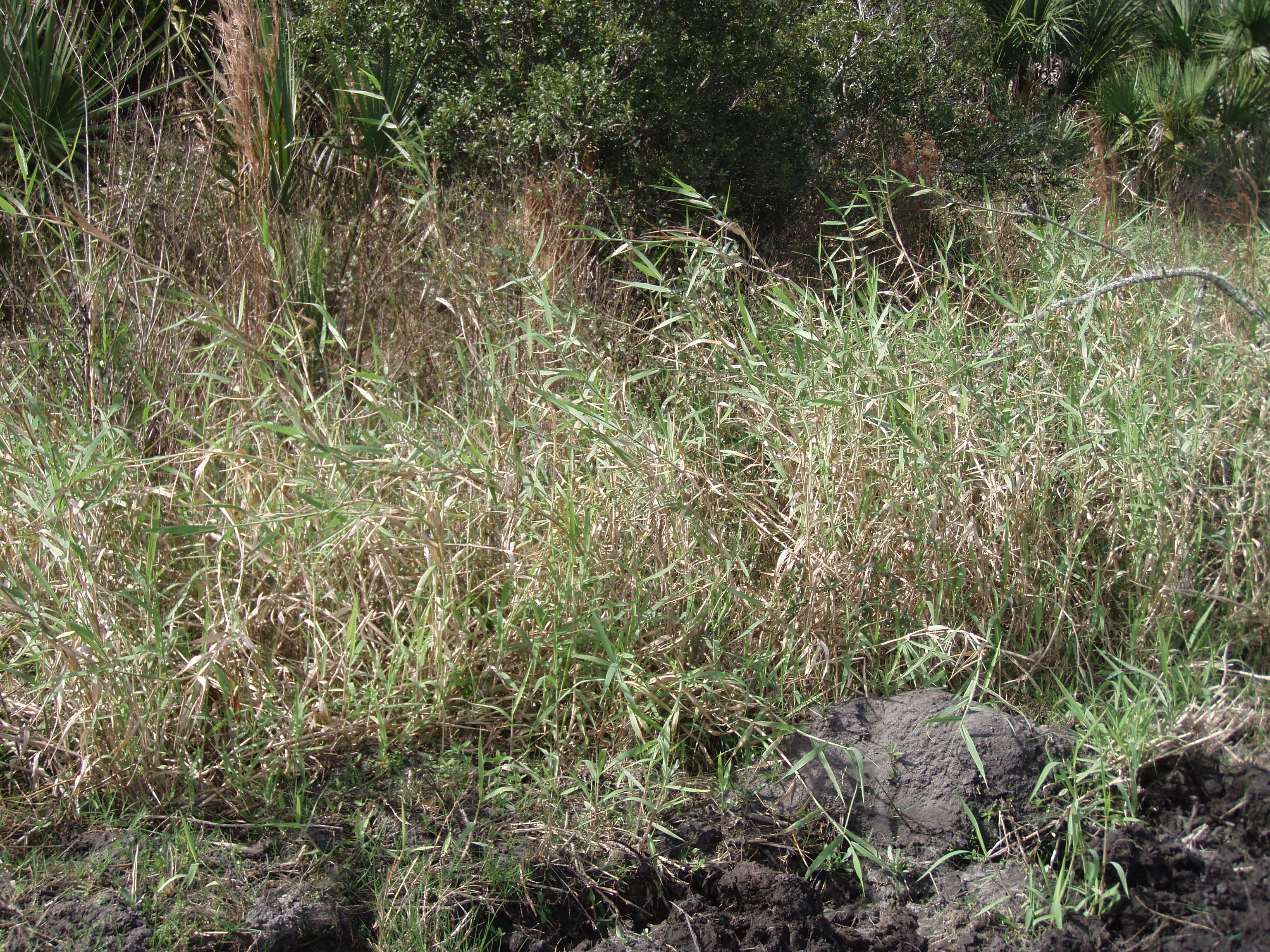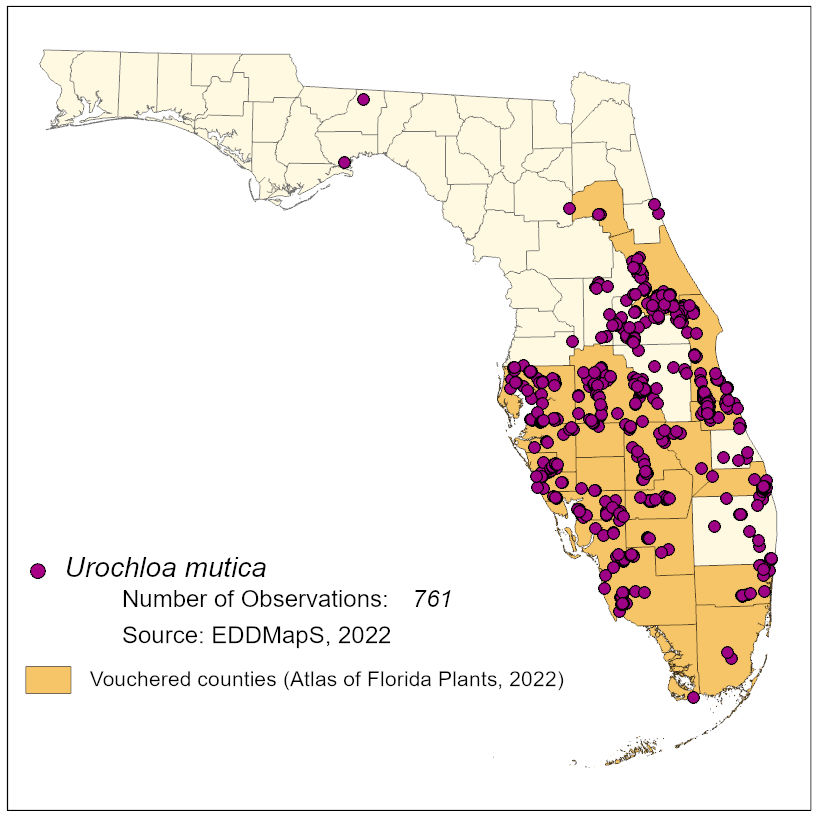Common Name: para grass
Family: Poaceae
Common Synonyms: Brachiaria mutica, Brachiaria purpurescens, Panicum muticum, Panicum purpurescens
USDA Hardiness Zone: 7a-11
Growth Habit: Graminoid
Origin: Africa
FISC Category: 1
FDACS Listed Noxious Weed: No
Introduction Date: Early 1900s
IFAS Assessment:


Para grass is perennial, can grow up to 2-3m high, and is stoloniferous. The stem has hairy nodes and sheaths. The leaf blades are 10-30 cm long and about 1 cm wide. The panicle is up to 30 cm long, with numerous spreading branches. Spikelets are about 3 cm long and have a purplish rachis.
Prefers wet conditions, central and southern peninsula
Escaped from cultivation in central and south Florida. Tolerant of drought and brackish water, but susceptible to frost. Spreads vegetatively.

NA
IFAS. 2011. Integrated Management of Nonnative Plants in Natural Areas of Florida. http://edis.ifas.ufl.edu/pdffiles/WG/WG20900.pdf Accessed June 13 2017.
Langeland, K.A., H.M. Cherry, C.M. McCormick, K.C. Burks. 2008. Identification and Biology of Non-Native Plants in Florida's Natural Areas-Second Edition. IFAS Publication SP 257. University of Florida, Gainesville, Florida.
IFAS. 2017. Para grass, Urochloa mutica. http://plants.ifas.ufl.edu/plant-directory/urochloa-mutica/. Accessed June 13, 2017.
Wunderlin, Richard P., and Bruce F. Hansen. Guide to the Vascular Plants of Florida. 3rd ed. Gainesville, FL: U of Florida, 2011.